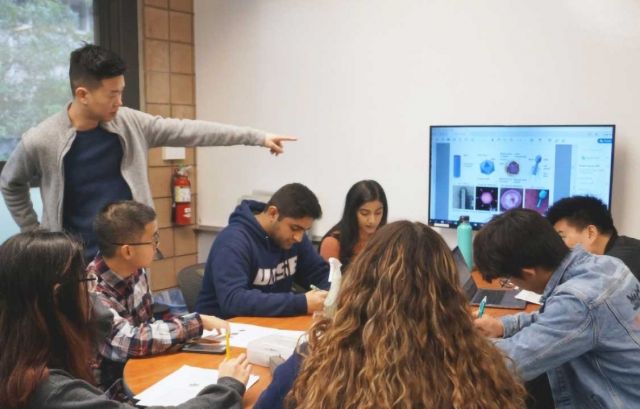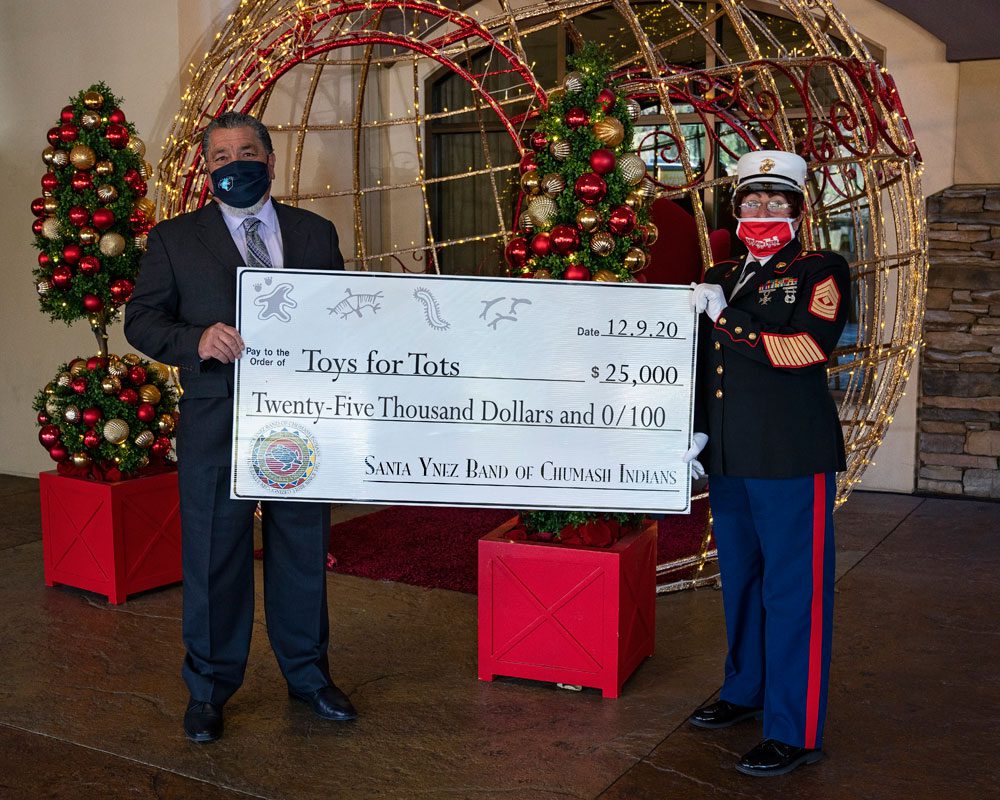By
When you take on something as virulent as the novel coronavirus, you have to act fast. In the three months since the first report of COVID-19 infection in the United States, the virus has spread to all 50 states and U.S. territories except for American Samoa, Micronesia, Palau and the Marshall Islands.
It has caused quarantines, lockdowns, illness and death, and brought abrupt and significant changes to life as we know it.
One of the greatest frustrations in the response to the pandemic in the U.S. has come from the lack of tests. COVID-19 is swift and stealthy, spreading through person-to-person contact as well as via contaminated surfaces. Many carriers are asymptomatic, often unaware they are shedding the virus wherever they go.
How can the path of the virus be traced, let alone predicted, if we can’t figure out who has it — and who doesn’t?
One of the main reasons for the lack of testing can be the critical and worldwide shortage of essential reagents needed to detect the virus, said UC Santa Barbara molecular biologist Max Wilson.
“They are depleted around the world,” said Wilson, who with his colleagues a few weeks ago donated 600 “reactions” to Santa Barbara’s Cottage Health System to aid their efforts to identify who could be infected.
Currently, Santa Barbara County reports 477 cases, 39 hospitalizations and seven fatalities due to COVID-19 infection — a relatively low rate of infection that can be attributed to effective social distancing.
However, it is highly likely the true number of carriers is far higher; testing is currently limited to particularly vulnerable individuals, such as the elderly and those who may have visited a coronavirus hotspot or had contact with a confirmed COVID-19 sufferer and are presenting symptoms themselves.
Wilson, along with colleagues Kenneth S. Kosik, Diego Acosta-Alvear and Carolina Arias are hoping to help change this situation. They have developed a CRISPR-based test that promises to be just as sensitive than conventional tests, but also faster and deployable in the field — qualities the current method of testing lacks.
And because the researchers’ CREST (Cas13-based, Rugged, Equitable, Scalable Testing) assay is based on a method different from the conventional PCR (polymerase chain reaction) test, it is not subject to the ongoing reagent shortage.
“We’ve scaled up massively,” Wilson said. “For example, we’ve purified enough of the protein for our CRISPR-based assay to do 500,000 tests in one go.”
The researchers’ work is in preprint form at bioRxiv.
The Hunt for Viral RNA
By far the most common test for the novel coronavirus — and the one endorsed by the Centers for Disease Control (CDC) — is a real-time PCR test, in which genetic material (in this case, single strand RNA) is extracted from sample tissue and converted into double-helix DNA by exposing it to an enzyme called a reverse transcriptase.
“DNA is way more stable and we’re way better at working with and detecting it,” Wilson said.
Placed in a mixture of reagents, and subjected to cycles of heat and cooling, the DNA strands separate and “primer” molecules designed to recognize the virus’s genetic material attach to sections of the genome. An enzyme then copies the missing parts of the strand between the primers and a fluorescent probe signals the complete copy.
Now there are twice as many DNA strands as before, and the cycle repeats until millions to billions of strands are present. A fluorescence in the sample indicates the genetic material has been recognized as being from the SARS-CoV-2 virus, and duplicated, amplifying the signal. Though sensitive, the real-time PCR test can take up to several days to return results.
The researchers’ assay detects the virus in a more direct manner. Based on CRISPR gene editing technology in which bacterial Cas (CRISPR associated) proteins seek, find and interact with genetic material, the method uses the gene-seeking capability of these proteins to scope out the coronavirus’s genome.
“In general, these Cas proteins are used by bacteria as a sort of immune system,” Wilson explained. Cas9, the protein most closely associated with CRISPR, is used by bacteria as a pair of programmable “molecular scissors” to recognize DNA sequences from viruses and mark them for destruction.
“But this coronavirus and other viruses have RNA genomes, and other Cas systems have evolved to recognize RNA,” Wilson said of Cas13, the protein of choice for this application.
Instead of cutting specific sequences of genetic material, Cas13, when it finds its target, will “turn into a nonspecific enzyme that degrades any sequence of RNA,” Wilson said. In the microbial world, when Cas13 is turned on in a bacteria by infection with a virus, it will typically degrade the bacteria’s RNA in an action somewhat akin to throwing one’s self on a grenade.
“There’s actually some thought that that bacterial ‘suicide’ is a form of protection to help the population of bacteria around it,” Wilson said. “It’s the ultimate form of self-quarantine.”
For coronavirus detection, the researchers programmed Cas13 to recognize specific sites of the virus’s genome.
“Once it locks on to those sites and recognizes them, the enzyme becomes active,” Wilson said. Fluorescent indicators glow in the researchers’ assay when the enzyme starts chewing on nonspecific RNA.
“Our little wells just light up if the virus is present when we mix these all these things together,” he said — no delay, no machine needed.
In the effort to deploy this as an additional method of novel coronavirus detection, the CREST assay faces the same hurdles as many of the other emerging coronavirus tests: FDA approval requirements and lack of recognition from the CDC.
Then there is the fact that it was developed in a research lab and not in a clinical laboratory, which means that per privacy rules, the identities of subjects cannot be linked to the specific results.
“Right now we cannot distribute it for diagnostic purposes,” said Wilson, who with his team is on the cusp of rolling out trials. “We are evaluating the potential need and hurdles.”
Indeed, the landscape around COVID-19 diagnostics is constantly changing: The FDA has been issuing emergency use authorizations for point-of-care COVID-19 diagnostics to “expand the number and variety of diagnostic tests,” as major pharmaceutical companies are gearing up to share resources and increase testing capacity.
“It appears that the UCSB team has produced what Dr. Deborah Birx asked for earlier this week — a testing breakthrough,” said Joseph Incandela, UCSB vice chancellor for research. “They did it while shifting to teaching remotely, taking care of kids at home, and all the other challenges of the situation we’re in.
“This is phenomenal, and I hope that we can now navigate the path of FDA approval quickly, for everyone’s sake.”
Tracking Community Transmission
Regardless, there’s plenty to do. The researchers want to maximize the capability of the Cas13 test and compare it to the CDC’s test, essentially testing the “gold standard.”
“We have shown that CREST is able to detect 10 copies of RNA per microliter,” said research team member Carolina Arias, whose research focuses on understanding virus-host interactions.
Additionally, the researchers are pursuing a surveillance study wherein they will collect samples from healthy, asymptomatic individuals in the general community to get a sense of where hotspots are, the frequency of asymptomatic infection, data that might inform the logistics of response.
They also want to sequence the genome of every positive test for clues on any variants that may have developed as the virus crosses the globe — information, Wilson said, that could prove useful in the search for a treatment or cure.
Their findings will be placed online at bioRxiv, a preprint server for the biological sciences that allows researchers to make their findings immediately available before or during journal submission.
For scientists whose individual research ground to a halt as a result of multiple shutdown orders — first from the campus, then from the state — in response to the pandemic, Wilson, et al are very busy.
“I’ve long since mourned that loss,” said Wilson, who joined the biology faculty a year and a half ago and spent his time trying to get his research program off the ground before the pandemic came to town. “But I don’t even worry about it because this is just what we have to do.”
On the other hand, the circumstances have presented a unique opportunity to witness the best of science, and of scientists.
“I see the scientists in this effort as our nation’s cavalry to fight off this disease,” he said. “And I’ve been completely astounded by the level of coordination and innovation from my colleagues who just a few weeks ago were studying totally different things. And now we’re all COVID-19 researchers working to get the nation back on its feet using science.”
Research on this project was conducted also by Jennifer Rauch, Eric Valois, Sabrina C. Solley, Friederike Braig, Ryan S. Lach and Naomi J. Baxter, all from the Department of Molecular, Cellular and Developmental Biology at UCSB.





